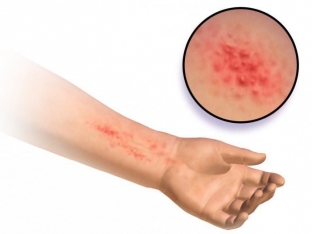At first glance, allergies seem like a very harmless condition. Almost every person at some time in their life has developed rashes or, for example, a runny nose, in response to exposure to various allergens. Modern medicines in just a few minutes can remove the manifestations of an allergic reaction and a person forgets that he felt bad just recently.
But the concept of an acute allergic reaction is very important to doctors of various specialties, because allergies can be so dangerous that in a matter of minutes it can be fatal. estet-portal.com will help you figure out how allergic reactions develop in the body:
- Mechanism of acute allergic reactions,
- The Praustnitz-Küstner reaction demonstrates the mechanism of an acute allergic reaction,
- What happens in the human body under the influence of allergy mediators,
- Anaphylaxis – a classic example of an acute allergic reaction.
Mechanism of acute allergic reactions
The concept of an acute allergic reaction implies the occurrence of an organism's response to the penetration of various antigens into it, which can cause an immune system reaction. Such allergens can be a huge number of substances that surround us every day: epithelial cells and animal hair, small mites, foods, drugs, and so on.
Allergic reaction itself is a rather complex process that develops in the body. There is a separate science in medicine – allergology, which studies the mechanisms of allergic reactions. About how an acute allergic reaction occurs and will be discussed further.
Acute allergic reactions:
- Praustnitz-Küstner reaction demonstrates the mechanism of an acute allergic reaction;
- what happens in the human body under the influence of allergy mediators;
- anaphylaxis – a classic example of an acute allergic reaction.
The Praustnitz-Küstner reaction demonstrates the mechanism of an acute allergic reaction
The mechanism of acute allergic reactions can be explained using the Praustnitz-Küstner reaction, which models this process. For this reaction, an allergen is injected intradermally, which stimulates the occurrence of degranulation of mast cells, previously already sensitized by the introduction of serum containing immunoglobulin E against this allergen.
As a result of the administration of serum, mast cell mediators cause the appearance of characteristic allergic rashes on the skin. During this process, histamine, tryptase and heparin are released. In parallel with this, mast cells begin to produce anaphylactic factors, platelet activating factor, prostaglandins, proteases, kinins and even serotonin – hormone of happiness.
What happens in the human body under the influence of allergy mediators
Mast cell mediators are the most important link in an allergic reaction, since under their influence all specific changes in the body occur, called manifestations of an allergic reaction.
The following reactions occur under the action of mediators:
- arterioles expand and blood flow increases;
- vascular permeability increases, resulting in tissue edema and fibrin deposition;
- receptors of cutaneous sensory nerves are excited, resulting in itching;
- smooth muscle spasms;
- mucus secretion increases.
All these reactions often occur within a few minutes after the allergen enters the body, the maximum manifestations of an acute allergic reaction can be observed after 30-60 minutes, then they quickly decrease.

Anaphylaxis – a classic example of an acute allergic reaction
Anaphylaxis is the most common example of an acute allergic reaction. Anaphylaxis is an acute life-threatening generalized and systemic hypersensitivity reaction. Anaphylaxis develops in sensitized organisms within only a few minutes after repeated exposure to the allergen.
Manifested by pronounced pain and severe swelling at the site of penetration of the allergen, which quickly spread to the entire body. In addition, with anaphylaxis, there is a sharp drop in blood pressure, bronchospasm and hypoxia. In almost 20% of cases, anaphylaxis is fatal, so this condition requires the immediate provision of qualified medical care.
See also: Allergies in the fall: the main types of allergens and treatment







Add a comment